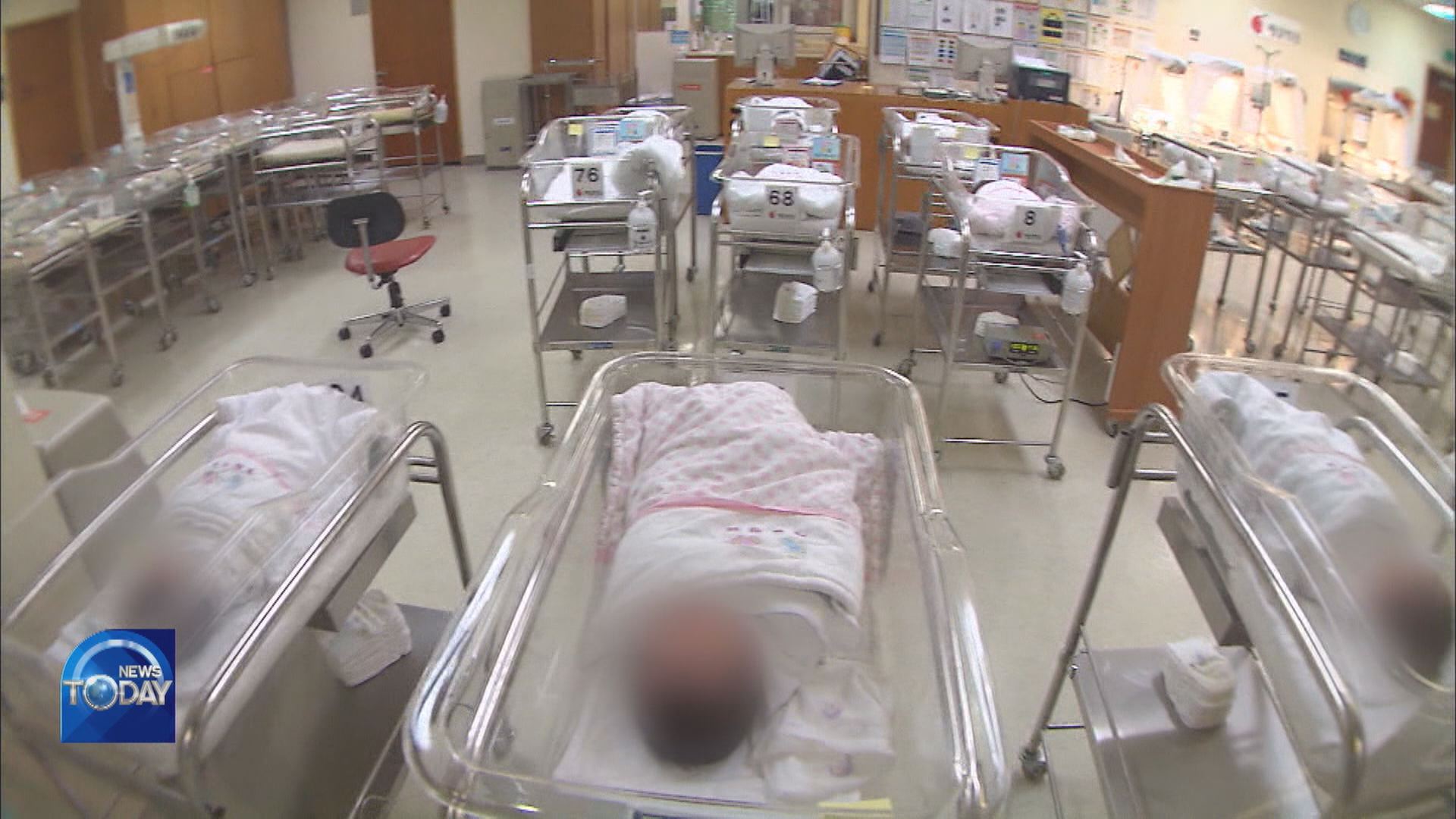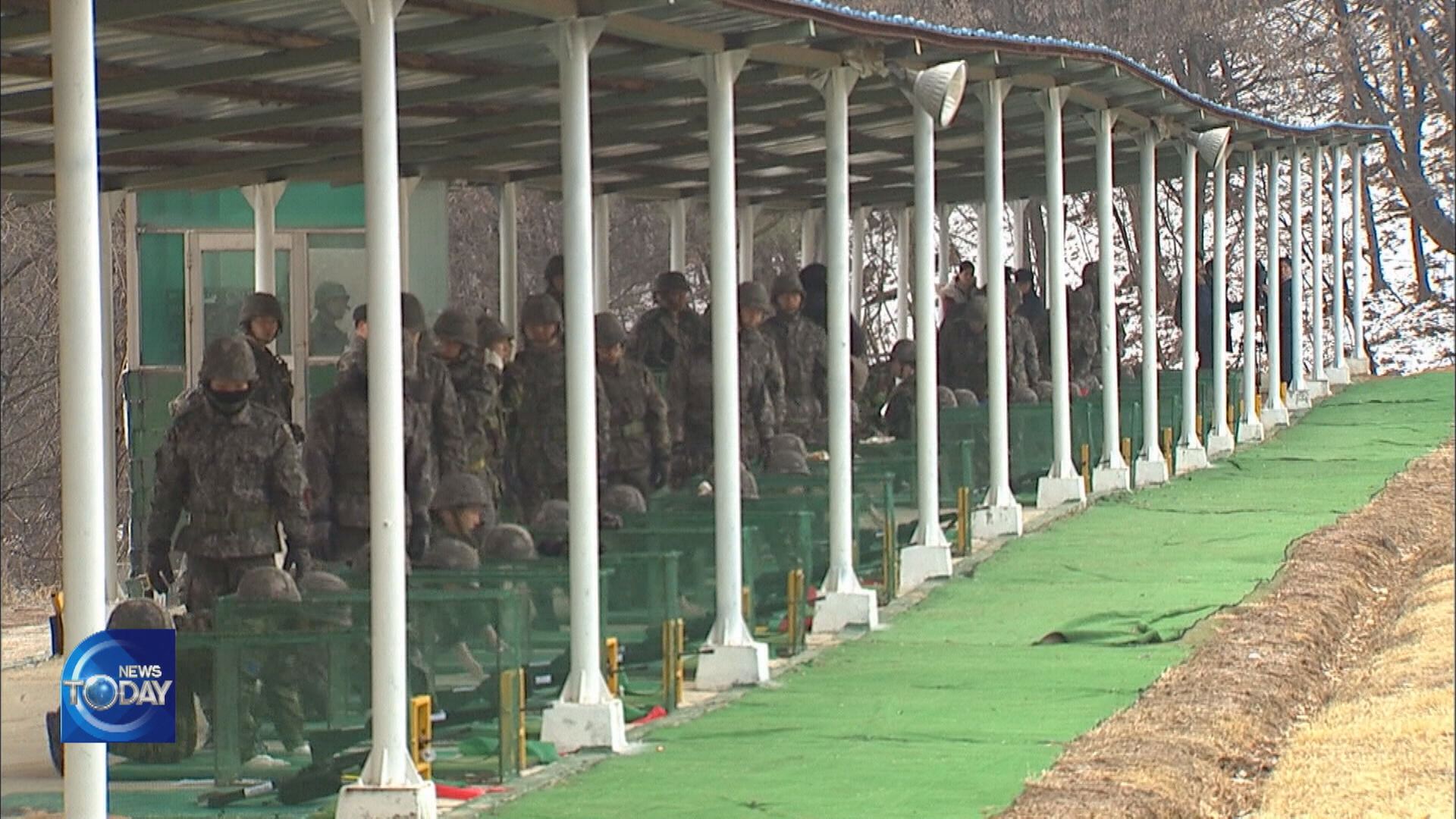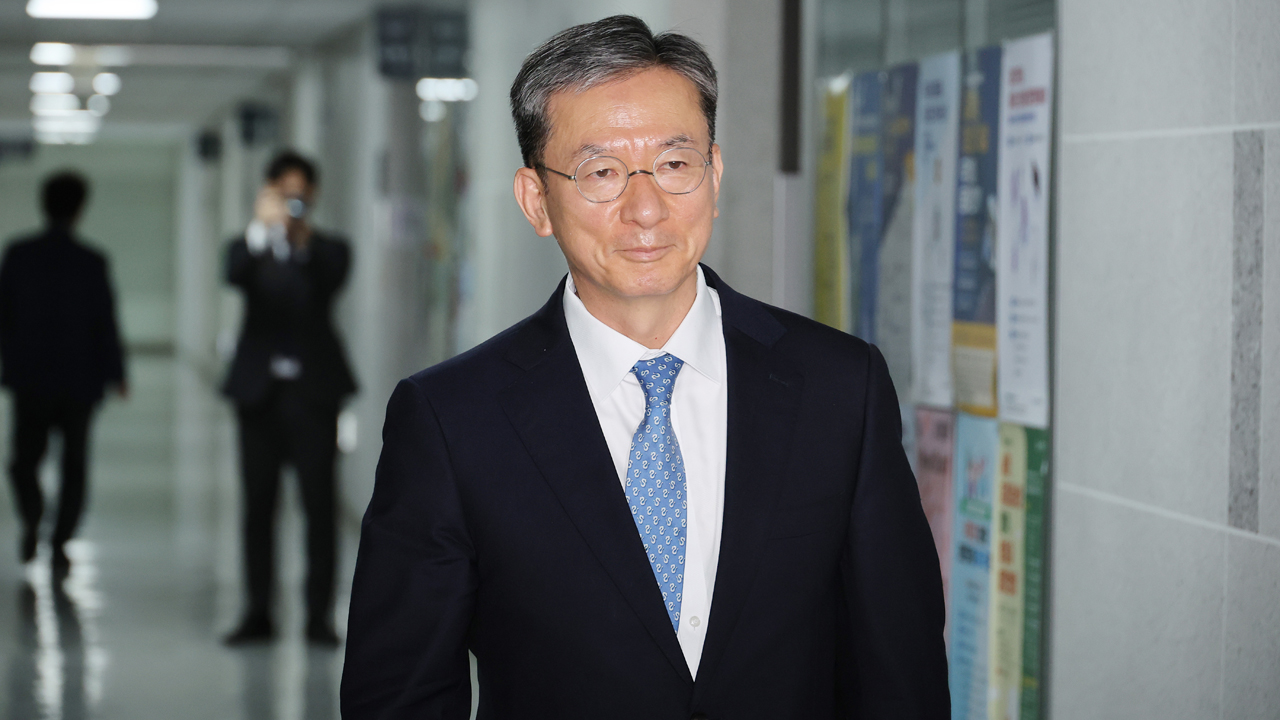S. KOREA'S POPULATION DROPS
입력 2021.02.25 (15:23)
수정 2021.02.25 (16:52)
읽어주기 기능은 크롬기반의
브라우저에서만 사용하실 수 있습니다.
[Anchor Lead]
South Korea is faced with another serious social challenge. It is the dwindling population. Last year, the nation saw the first natural decline in its population, which means that deaths outnumbered births.
[Pkg]
[Soundbite] (KBS News 9(Nov. 6, 1989)) : "The total population is predicted to decline starting from 2020."
The forecast from three decades ago proved to be right. South Korea's population dwindled by 33,000, as deaths outnumbered births. The nation's population declined naturally for the first time. It is due to the fast-falling number of newborns. Last year, the number of newborns stood at 272,400, slipping below the 300,000 range for the first time. During the 1990s, up to 700,000 babies were born annually. But it fell to some 400,000 by 2002. The figure slipped to the 200,000 level in 2020, just three years after dropping to the 300,000 range in 2017.
[Soundbite] Kim Soo-young(Statistics Korea) : "In 2020, marriages dropped amid the COVID-19 pandemic, leading to a fall in births."
Accordingly, related statistics also hit an all-time low. The number of babies born per 1,000 people reached another record low of 5.3. The nation's total fertility rate also dropped to 0.84, which is the lowest ever to be recorded. The rate itself refers to the number of children that would be born to a single woman over her lifetime and it is well below one. South Korea is the sole county to post a total fertility rate of below one among OECD member countries with related data. More and more South Korean married couples delay having children. The percentage of couples having babies within two years after getting married dropped to 34 percent. The rate of those having their first baby more than five years after they tie the knot rose to over 25 percent.
[Soundbite] Kim Seok-ho(Prof. Seoul Nat'l Univ.) : "There should be policies convincing people that they can maintain or improve the quality of life eve after getting married and having children."
The nation's total population will not likely drop immediately, as the latest statistics don't include the net influx of foreign immigrants. Statistics Korea, however, predicts that the national total population will also begin declining earlier than the initially projected 2029, as fewer foreigners are moving to South Korea amid the prolonged COVID-19 pandemic.
South Korea is faced with another serious social challenge. It is the dwindling population. Last year, the nation saw the first natural decline in its population, which means that deaths outnumbered births.
[Pkg]
[Soundbite] (KBS News 9(Nov. 6, 1989)) : "The total population is predicted to decline starting from 2020."
The forecast from three decades ago proved to be right. South Korea's population dwindled by 33,000, as deaths outnumbered births. The nation's population declined naturally for the first time. It is due to the fast-falling number of newborns. Last year, the number of newborns stood at 272,400, slipping below the 300,000 range for the first time. During the 1990s, up to 700,000 babies were born annually. But it fell to some 400,000 by 2002. The figure slipped to the 200,000 level in 2020, just three years after dropping to the 300,000 range in 2017.
[Soundbite] Kim Soo-young(Statistics Korea) : "In 2020, marriages dropped amid the COVID-19 pandemic, leading to a fall in births."
Accordingly, related statistics also hit an all-time low. The number of babies born per 1,000 people reached another record low of 5.3. The nation's total fertility rate also dropped to 0.84, which is the lowest ever to be recorded. The rate itself refers to the number of children that would be born to a single woman over her lifetime and it is well below one. South Korea is the sole county to post a total fertility rate of below one among OECD member countries with related data. More and more South Korean married couples delay having children. The percentage of couples having babies within two years after getting married dropped to 34 percent. The rate of those having their first baby more than five years after they tie the knot rose to over 25 percent.
[Soundbite] Kim Seok-ho(Prof. Seoul Nat'l Univ.) : "There should be policies convincing people that they can maintain or improve the quality of life eve after getting married and having children."
The nation's total population will not likely drop immediately, as the latest statistics don't include the net influx of foreign immigrants. Statistics Korea, however, predicts that the national total population will also begin declining earlier than the initially projected 2029, as fewer foreigners are moving to South Korea amid the prolonged COVID-19 pandemic.
■ 제보하기
▷ 카카오톡 : 'KBS제보' 검색, 채널 추가
▷ 전화 : 02-781-1234, 4444
▷ 이메일 : kbs1234@kbs.co.kr
▷ 유튜브, 네이버, 카카오에서도 KBS뉴스를 구독해주세요!
- S. KOREA'S POPULATION DROPS
-
- 입력 2021-02-25 15:23:50
- 수정2021-02-25 16:52:54

[Anchor Lead]
South Korea is faced with another serious social challenge. It is the dwindling population. Last year, the nation saw the first natural decline in its population, which means that deaths outnumbered births.
[Pkg]
[Soundbite] (KBS News 9(Nov. 6, 1989)) : "The total population is predicted to decline starting from 2020."
The forecast from three decades ago proved to be right. South Korea's population dwindled by 33,000, as deaths outnumbered births. The nation's population declined naturally for the first time. It is due to the fast-falling number of newborns. Last year, the number of newborns stood at 272,400, slipping below the 300,000 range for the first time. During the 1990s, up to 700,000 babies were born annually. But it fell to some 400,000 by 2002. The figure slipped to the 200,000 level in 2020, just three years after dropping to the 300,000 range in 2017.
[Soundbite] Kim Soo-young(Statistics Korea) : "In 2020, marriages dropped amid the COVID-19 pandemic, leading to a fall in births."
Accordingly, related statistics also hit an all-time low. The number of babies born per 1,000 people reached another record low of 5.3. The nation's total fertility rate also dropped to 0.84, which is the lowest ever to be recorded. The rate itself refers to the number of children that would be born to a single woman over her lifetime and it is well below one. South Korea is the sole county to post a total fertility rate of below one among OECD member countries with related data. More and more South Korean married couples delay having children. The percentage of couples having babies within two years after getting married dropped to 34 percent. The rate of those having their first baby more than five years after they tie the knot rose to over 25 percent.
[Soundbite] Kim Seok-ho(Prof. Seoul Nat'l Univ.) : "There should be policies convincing people that they can maintain or improve the quality of life eve after getting married and having children."
The nation's total population will not likely drop immediately, as the latest statistics don't include the net influx of foreign immigrants. Statistics Korea, however, predicts that the national total population will also begin declining earlier than the initially projected 2029, as fewer foreigners are moving to South Korea amid the prolonged COVID-19 pandemic.
South Korea is faced with another serious social challenge. It is the dwindling population. Last year, the nation saw the first natural decline in its population, which means that deaths outnumbered births.
[Pkg]
[Soundbite] (KBS News 9(Nov. 6, 1989)) : "The total population is predicted to decline starting from 2020."
The forecast from three decades ago proved to be right. South Korea's population dwindled by 33,000, as deaths outnumbered births. The nation's population declined naturally for the first time. It is due to the fast-falling number of newborns. Last year, the number of newborns stood at 272,400, slipping below the 300,000 range for the first time. During the 1990s, up to 700,000 babies were born annually. But it fell to some 400,000 by 2002. The figure slipped to the 200,000 level in 2020, just three years after dropping to the 300,000 range in 2017.
[Soundbite] Kim Soo-young(Statistics Korea) : "In 2020, marriages dropped amid the COVID-19 pandemic, leading to a fall in births."
Accordingly, related statistics also hit an all-time low. The number of babies born per 1,000 people reached another record low of 5.3. The nation's total fertility rate also dropped to 0.84, which is the lowest ever to be recorded. The rate itself refers to the number of children that would be born to a single woman over her lifetime and it is well below one. South Korea is the sole county to post a total fertility rate of below one among OECD member countries with related data. More and more South Korean married couples delay having children. The percentage of couples having babies within two years after getting married dropped to 34 percent. The rate of those having their first baby more than five years after they tie the knot rose to over 25 percent.
[Soundbite] Kim Seok-ho(Prof. Seoul Nat'l Univ.) : "There should be policies convincing people that they can maintain or improve the quality of life eve after getting married and having children."
The nation's total population will not likely drop immediately, as the latest statistics don't include the net influx of foreign immigrants. Statistics Korea, however, predicts that the national total population will also begin declining earlier than the initially projected 2029, as fewer foreigners are moving to South Korea amid the prolonged COVID-19 pandemic.
이 기사가 좋으셨다면
-
좋아요
0
-
응원해요
0
-
후속 원해요
0

















이 기사에 대한 의견을 남겨주세요.